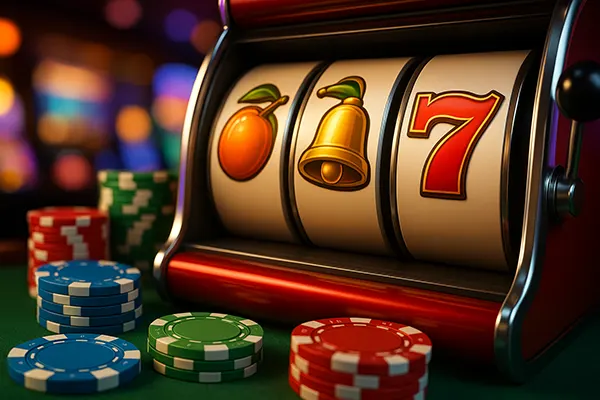Analysing Popular Strategies in Blackjack: Myths and Realities

Blackjack stands as a hallmark of casino entertainment, offering players a unique blend of luck, skill, and strategy. Unlike many other casino games, blackjack gives participants the power to influence outcomes through calculated decisions. Over the years, various strategies have emerged, promising to tip the odds in favour of players. But which strategies are genuinely effective, and which are shrouded in myth? This comprehensive guide examines popular blackjack strategies, separating reality from misconceptions to equip you with the knowledge to play smarter.
The Basics: Understanding Blackjack Strategies
At its core, blackjack is a simple game with a primary goal: outscore the dealer without exceeding a total of 21. Despite its apparent simplicity, many players falter by ignoring the fundamental strategies that underpin successful gameplay. Understanding the essentials is the first step to debunking popular myths about the game.
The basic strategy chart is an essential tool for players, offering a roadmap for optimal decisions based on the player’s hand and the dealer’s up-card. By adhering to the chart’s recommendations, players can reduce the house edge to less than 1%, making blackjack one of the most player-friendly casino games. However, not all players utilise this tool effectively. Many abandon the chart during emotional highs or lows, leading to costly mistakes.
Moreover, the psychological allure of blackjack often leads players to search for shortcuts or “secret” strategies. These shortcuts, more often than not, lack statistical backing and contribute to perpetuating myths about the game. A disciplined approach to understanding and applying basic strategies lays a strong foundation for success.
Breaking Down the Basic Strategy Chart
The basic strategy chart isn’t just a tool; it’s a science-backed system designed to guide players through complex decisions. Every situation, from splitting pairs to doubling down, is covered with optimal recommendations. For instance, knowing when to split aces or when to stand on a hard 17 can significantly influence outcomes over time.
Misconceptions about the chart often arise from its perceived rigidity. Critics argue that it doesn’t account for “gut feelings” or unique gameplay scenarios. In reality, the chart’s recommendations are derived from analysing millions of hand simulations. The data proves that following the chart consistently yields better results than relying on instinct.
Card Counting: Myth or Mastery?
Card counting has captured the public’s imagination, thanks to Hollywood portrayals and legendary stories of professional gamblers beating the odds. The concept involves tracking high and low cards to determine the likelihood of favourable outcomes. While it sounds simple in theory, card counting in practice is far more complex and often impractical in modern casinos.
The reality of card counting is often exaggerated. Casinos today employ measures like continuous shuffling machines and multiple-deck games to neutralise its effectiveness. Additionally, card counters must possess extraordinary concentration and mathematical skills to execute the strategy successfully. For the average player, investing the time and energy required to master card counting may not be worthwhile.
The Practicality of Card Counting in Modern Casinos
While card counting remains theoretically valid, modern casino environments make it a daunting endeavour. Continuous shuffling machines disrupt tracking efforts, and vigilant casino staff are trained to identify potential counters. Even if you successfully count cards, the reward may not justify the risks, such as being banned from casinos or facing unwelcome scrutiny.
Online blackjack presents an entirely different challenge. With random number generators determining card outcomes, traditional card counting becomes irrelevant. For online players, focusing on basic strategies and bankroll management proves more beneficial than attempting to adapt card-counting techniques to a digital format.

The Gambler’s Fallacy: A Dangerous Misconception
The gambler’s fallacy is a widespread psychological trap in blackjack and other games of chance. It involves the mistaken belief that past events influence future outcomes. For example, players may assume that a dealer winning multiple hands in a row increases the likelihood of a player victory in subsequent rounds. This misconception often leads to poor decision-making and unnecessary losses.
In blackjack, each hand is an independent event, with no connection to previous outcomes. Believing otherwise can lead to chasing losses or overconfident betting, both of which can erode a player’s bankroll. Recognising the fallacy is essential for developing a logical, disciplined approach to the game.
How to Avoid Falling into the Gambler’s Fallacy
Overcoming the gambler’s fallacy requires a solid understanding of probability and a commitment to rational decision-making. One effective method is to treat each hand as a standalone event, focusing solely on the immediate scenario. Avoid making bets based on streaks or perceived “hot” and “cold” tables, as these are illusions with no statistical basis.
Implementing a disciplined bankroll management system is another key to avoiding the gambler’s fallacy. By setting strict limits on spending and sticking to a predetermined strategy, players can mitigate emotional impulses and maintain control over their gameplay. Education and awareness are powerful tools in combatting this common pitfall.
In conclusion, blackjack offers a rich tapestry of strategies, but not all are created equal. Separating myths from reality empowers players to make informed decisions and enhance their gaming experience. By mastering the basics, critically evaluating advanced techniques, and avoiding psychological traps, you can approach blackjack with confidence and clarity.



